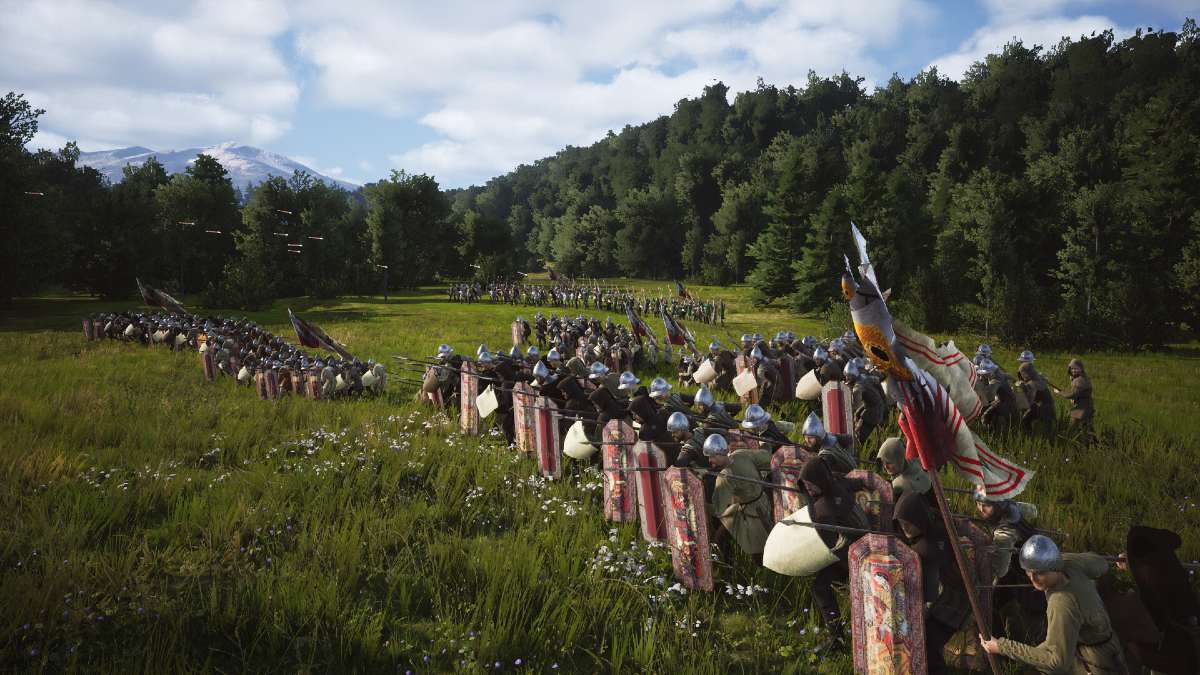Tyler, Trey, and I were sitting around Twinfinite HQ the other day, talking about Hitman: Absolution. Specifically, we were discussing the way we each like to play games which allow for customized styles. Tyler, being a sneaky backstabbing type, prefers the ‘silent assassin’ method of slipping in and out without being detected. Trey, on the other hand, approaches missions like they’re an opportunity to live out his fantasy of reenacting the warehouse scene from RoboCop.
Personally, I’m more a fan of the ‘James Bond’ method – sneak in quietly, set a bunch of traps and explosives, and then drop the hammer and blast my way out. Different strokes for different folks I say, but it got me thinking about my big problem with open-world games; namely that they only offer the illusion of player freedom and are a poor substitute for multiple paths within a smaller game space.
Open-world games can be a lot of fun to be sure, and they’ve come a long way technically in the past decade or so. That being said, I’d argue they’re at the point now where they need to be scaled back a little. Take a game like Just Cause 2. Its game world is absolutely MASSIVE, and it’s chock full of jungles, mountains, cities, and a million other things.

The problem however, is that when you get right down to it, you’re just doing the same thing over and over again, and there’s really not a whole lot of variation in terms of how you can achieve objectives. It’s a great sandbox for dicking around in (and I’m going to talk about that topic next week), but in terms of providing a varied and multifaceted player-driven experience the map could have been a tenth the size and it wouldn’t have made a lick of difference. It’s pure frosting, and aside from the immediate environments, the experience for every player is pretty much the same. Skyrim, Assassin’s Creed, Arkham City…I enjoy these games to varying degrees, but to be honest the size of their relative worlds don’t really enhance their experience so much as pad it. Breadth has become the priority at the expense of depth, and it’s a shame.
There are a ton of games out there that claim to allow players the freedom to play through game sections using different tactics and techniques. Very few of them actually back up that claim with their gameplay. I think the biggest misconception out there is that open-world games like Skyrim or Assassin’s Creed allow the player to complete objectives and defeat enemies however they want. The Assassin’s Creed series is a prime example of a game that strives to accomplish this, but is incredibly inconsistent in its execution. Its titles give you the chance (and often require you) to scout around and check out the logistics of where and how you are going to carry out your mission. The problem is when the time comes to carry it out. In my experience, the majority of the assassinations themselves either end with you foolishly chasing the target down the street. Other missions put you into a forced-stealth scenario where discovery equals instant failure, which (aside from perhaps escort missions) is the single worst gameplay feature EVER.
Sometimes the best inspiration for future game design is to look at games from the past that both trusted and challenged players to find their own solutions. Here are a few examples of the kind of gameplay that I think should be the focus of the next generation.
Hitman: Blood Money – The Murder of Crows

You know how everybody made a big deal about the crowd mechanics in Assassin’s Creed on the 360 and PS3? Well, Hitman: Blood Money squeezed that kind of tech out of the PS2 a full year beforehand. This mission takes place in a large chunk of New Orleans during the Mardi Gras parade. Agent 47 is tasked with killing an assassin and his two assistants, all of whom are hidden in the massive crowd. There are alleyways, bars, and houses that you can enter. There are many opportunities for getting disguises, but you need to be careful about being seen. Not only that, but your targets are in radio contact with each other so there are potential consequences if you cut that off.
It’s amazing how many different ways you can get things done in this level. You can slink through the masses using them as cover, blast away through the crowd, go into a building and snipe away, follow your target into an alley, and so on; but it’s when you get discovered that things get REALLY interesting. People scatter, shots fire from all directions, and the mission suddenly becomes a race against the clock to kill three armed and paranoid assassins. It’s pure intensity, and most importantly it works on a functional level. This mission is prime Hitman in that it gives you total freedom to carry it out however you want, and it’s actually feasible to use any of them.
Splinter Cell: Chaos Theory – Bank

The Splinter Cell series has a lot of memorable locations, but none are as perfectly balanced and fun as the Bank in Chaos Theory. The basic mission is to sneak into a guarded bank after hours, bypass the security system, and break into the vault. What makes it so fun is that you have a number of possible entry points, which in effect changes the order that you complete your objectives.
One time I entered through the roof into the main teller area, disabled all the cameras from a distance, and was in-and-out only having to knock out a couple of guards. Another time, I went in through the front door and killed everyone in my way, moving from shadow to shadow; one step ahead of the enemy AI. While it was thrilling to move around right under the guards’ noses, it was equally satisfying walking out the front door, without a care in the world, to complete my mission. This level is probably the best-designed game in the Splinter Cell series; the facility is designed to be tackled from any direction, it is functional for both stealth and action fans, and it feels like a real physical space. Most of the missions in Chaos Theory are outstanding, but this one stands head and shoulders on the merit of its incredible versatility.
Deus Ex: Human Revolution – The whole thing, really

Mandatory boss-battles notwithstanding, I am of the opinion that Deus Ex: Human Revolution is the closest a game has come to achieving that elusive balance of giving the player total freedom to tackle objectives in whatever way is preferred, as well as making sure that all paths are viable. While the original Deus Ex is renowned for the freedom it offers the player, its great flaw is that limitations imposed on the character greatly favor some types of gameplay over others and make sections virtually impossible if you do not build your character carefully. It’s one thing to have to fight an enemy against which you are ill-equipped, but getting stuck in an area due to poor planning or lack of items is a distinct and annoying possibility; particularly as it forces you to (at the very least) go back to a previous save and restart.
Human Revolution definitely scales back on the player freedom granted by its predecessor, but the trade-off is a much more focused experience in which the player has to make more on-the-fly decisions based on what options are available. Pretty much every building/facility/section in the game has at least three ways they can be traversed, and they all offer unique challenges and thrills. Whether you choose to sneak around, hack security systems, or launch a full-on assault, you have about an equal chance of success – it all comes down to nerves.
Truth be told, I’m a fan of all kinds of games; linear, open-world, story-heavy, gameplay-focused. It really doesn’t matter as long as it captures my imagination. This current generation of gaming has made some interesting strides over the past few years, but I think it’s time for a new direction. Developers have done some incredibly ambitious and striking things with story, and it’s time to apply that to gameplay. Recent titles like Deus Ex: Human Revolution and Dishonored are definite steps in the right direction by demonstrating the confidence to allow players to use their mechanics and thrive. I sincerely hope this design philosophy catches on and allows Tyler to sneak into the night, Trey to wade through the blood of his enemies, or me to quietly slip into a guarded area and leave it like this:




